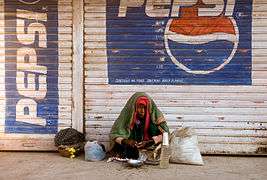Marxist geography
| Part of a series on |
| Marxism |
|---|
 |
|
|
Marxist geography is a strand of critical geography that uses the theories and philosophy of Marxism to examine the spatial relations of human geography. In Marxist geography, the relations that geography has traditionally analyzed—natural environment and spatial relations—are reviewed as outcomes of the mode of material production. To understand geographical relations, on this view, the social structure must also be examined. Marxist geography attempts to change the basic structure of society.[1]
Philosophy and methodology
Marxist geography is radical in nature and its primary criticism of the positivist spatial science centered on the latter's methodologies, which failed to consider the characteristics of capitalism and abuse that underlie socio-spatial arrangements. As such, early Marxist geographers were explicitly political in advocating for social change and activism; they sought, through application of geographical analysis of social problems, to alleviate poverty and exploitation in capitalist societies.[2] Marxist geography makes exegetical claims regarding how the deep-seated structures of capitalism act as a determinant and a constraint to human agency. Most of these ideas were developed in the early 1970s by dissatisfied quantitative geographers; David Harvey is generally regarded as the primary trail-blazer of the Marxist movement in human geography.
In order to accomplish such philosophical aims, these geographers rely heavily upon Marxist social and economic theory, drawing on Marxian economics and the methods of historical materialism to tease out the manner in which the means of production control human spatial distribution in capitalist structures. Marx is also invoked to examine how spatial relationships are affected by class. The emphasis is on structure and structural mechanisms. This emphasis has yielded results but also criticism .
References
- ↑ An Introduction to Marxist Geography.
- ↑ Harvey, David. 1973. "Social Justice and the City"
